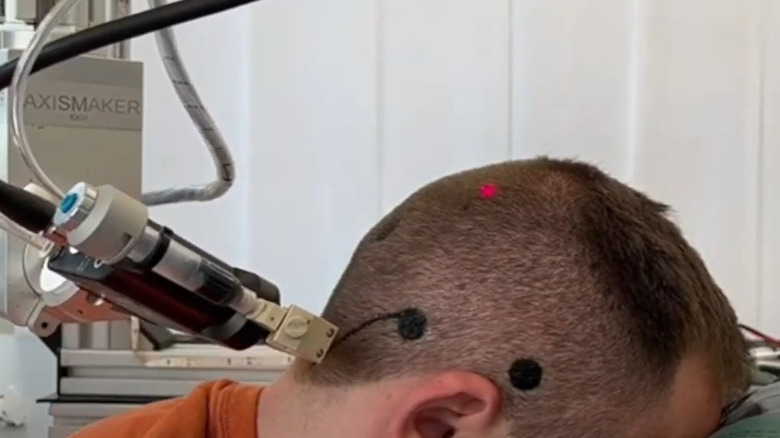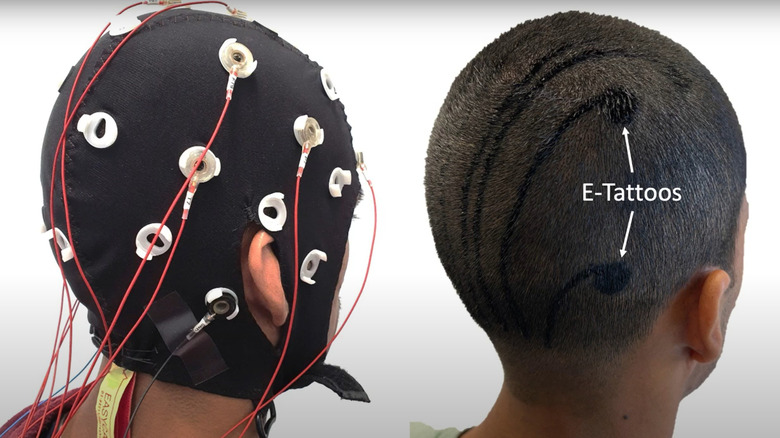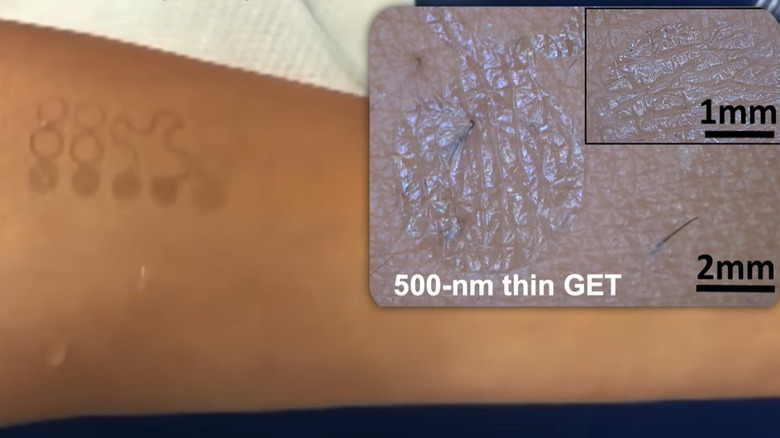What Is An Electric Tattoo & How Does It Work?
The relationship between art and technology is cyclical. Whether in the realms of film, architecture, or artificial intelligence, art and technology are in a constant dialogue driven by a shared pursuit of creativity, with each informing the other as they pursue the next innovation in their respective disciplines. This dynamic often makes surprising connections, one of which is a technology straight from science fiction: a new tattoo capable of measuring brain activity. Sprayed directly onto a patient's scalp, these 'electric tattoos' can monitor brainwaves for hours, aiding doctors in diagnosing conditions ranging from sleep disorders to epilepsy. With polymer-infused ink capable of carrying the electronic signals brain cells use to communicate with one another, this method of electroencephalography, which refers to the field of studying brainwaves, may significantly change how scientists explore the human brain, potentially replacing traditional electroencephalographic tests rife with technical challenges.
Interestingly, some tattoo artists have begun applying these concepts to body art, experimenting with built-in lights and circuit systems. Also known as electric tattoos, this innovative style can produce designs that glow under ultraviolet light or can be turned on and off, emitting unique light signatures. In response, scientists have started to build on these artistic concepts by developing advanced wearable smart devices to analyze key health metrics. Functioning like adhesive tattoos embedded with lights, sensors, and nanowires, these e-tattoos can non-invasively analyze patients' blood and vital signs.
Ride the (brain)wave
Traditional electroencephalographic tests measure brainwaves by gluing small metal electrodes to select areas of the scalp. Known as discs, these electrodes contain tiny wires capable of sensing the synaptic activity of a patient's brain cells by measuring the miniature electrical pulses sent between their pyramidal neurons. Working on both sleeping and conscious patients, electroencephalography measures the aggregated activity of these brainwaves by microvolts. Shockingly, EEG technology is over a century old, and has been used by neurologists to study cognitive activity, Alzheimer's, epilepsy, sleep disorders, brain injuries, and more. Unfortunately, EEGs often experience technical difficulties. For one thing, hair on a subject's scalp can disrupt test results, particularly if it is thick or curly. The bulky tangle of wires can also prove uncomfortable, while test results often become less accurate after lasting longer than six.
Electric tattoos, meanwhile, bypass many of these inhibitors. Applied by an inkjet printer, the conductive ink settles between the hairs directly onto the scalp. A five-axis robot applies the self-drying biocompatible inks made of highly conductive polymers to the scalp, placing the electrodes and interconnected lines onto precise points of the subject's skull and allowing it to dry into an ultra-thin conductive film. Doing away with the cumbersome EEG process, the scientists developing electric tattoos believe that the technology may even go beyond revolutionizing noninvasive brain monitoring systems, applying to industries like prosthetics, virtual reality, and human-robot teaming.
It's electric
In a move that reflects the reciprocal nature of art and technology, the term e-tattoos has taken on a second meaning in recent years, where artists have begun to incorporate some of the same techniques used by scientists to create body art. To some, the phrase may conjure images of glow-in-the-dark tattoos, which light up under ultraviolet light due to their use of fluorescent ink. But more interestingly, the term has come to apply to tattoos that utilize lights and other electronic devices, which can be stuck on by an adhesive film — similar to temporary tattoos. Artists using such techniques may be able to give their patrons body art that can change color or respond to their environment or bodily functions.
In an exciting development, these techniques have begun to be used to attach wearable medical devices, measuring vital signs like heart rate and blood pressure. Although still in the early stages of development, scientists believe that such wearables could make some medical devices more efficient, comfortable, and affordable. In one example, diabetes patients can use these tattoos to monitor glucose levels, alerting the wearer whenever they need an insulin shot. Dr. Nanshu Lu, a professor at UT Austin who headed the previously mentioned study on EEGs, has experimented with using printed adhesive tattoos to measure and report blood flow like an oximeter by shining a light through the skin and measuring the amount reflected through the body tissue. Other applications of this technology could apply to fitness, work productivity, and gauging exhaustion levels for practitioners of high-stress jobs such as air traffic controllers and pilots. Despite these advancements, technical and regulatory challenges will likely delay the market readiness of e-tattoos, as engineers continue to make headway on game-changing medical nanotechnologies.


